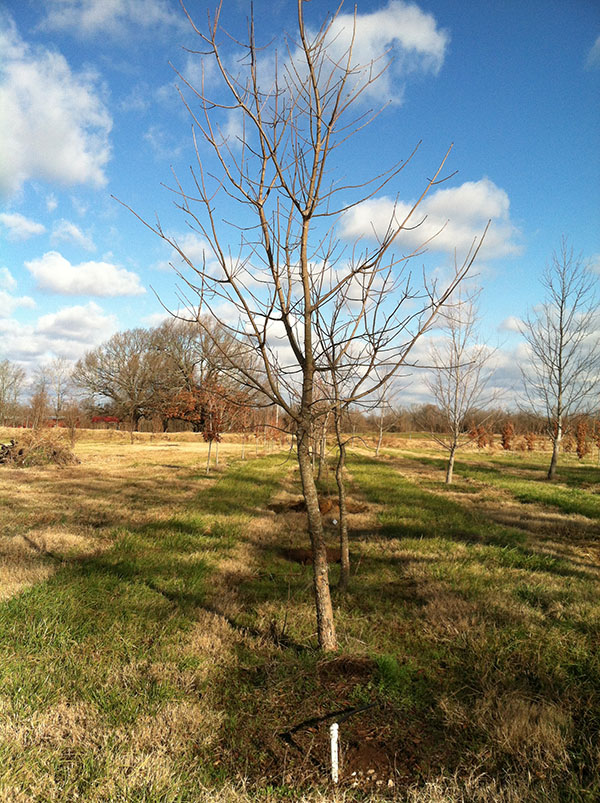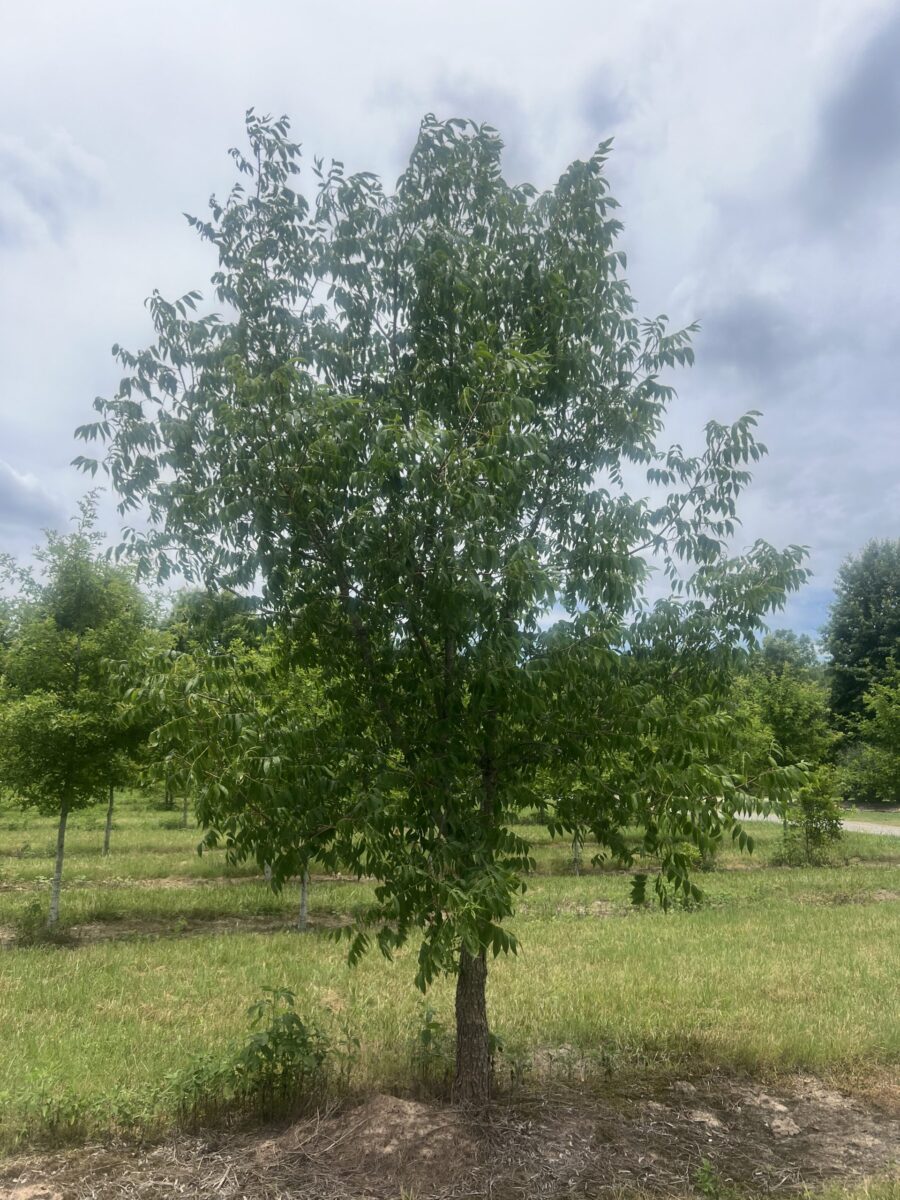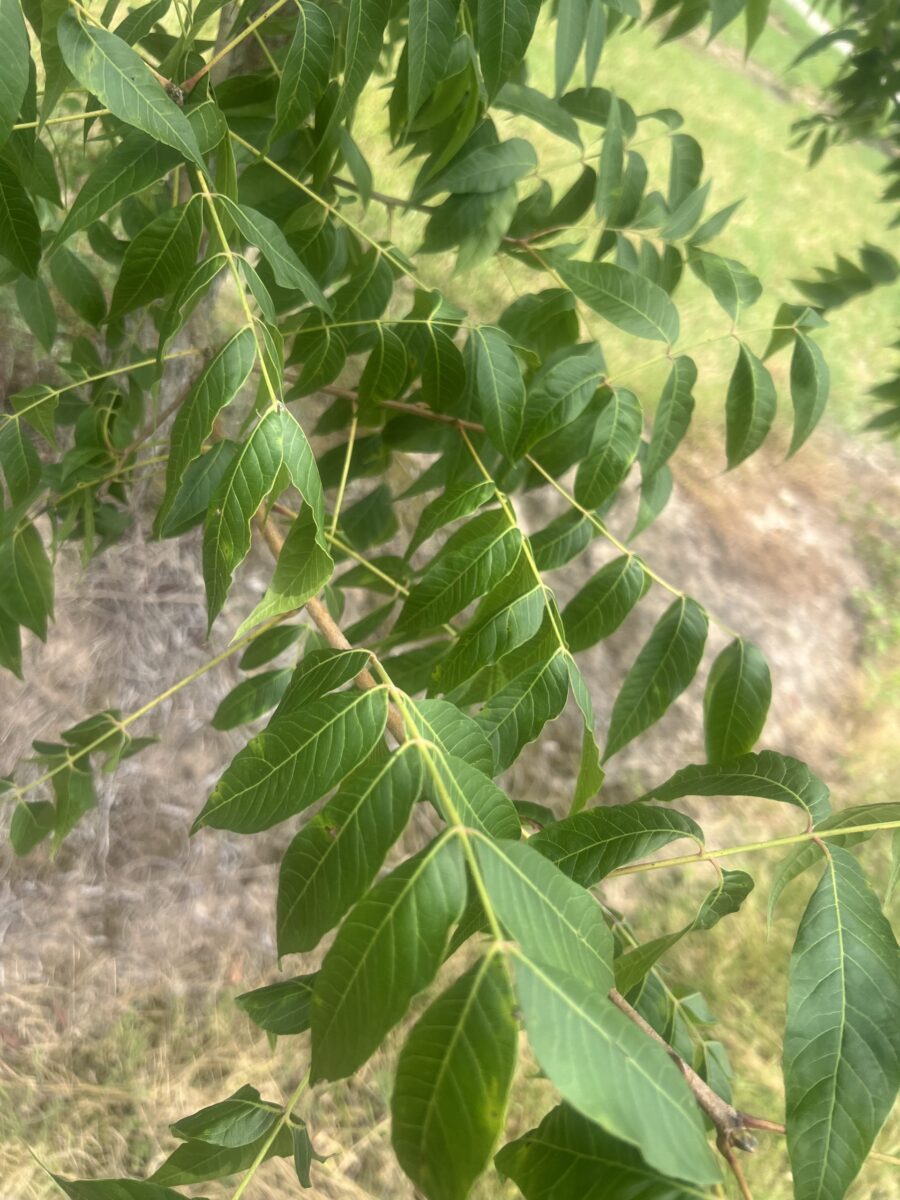



Pistacia chinesis
Description: The Chinese Pistache is an exceptional choice for landscapes in hot, dry climates, showcasing remarkable adaptability and resilience. This deciduous tree typically reaches heights of up to 30 feet, with an equal spread, creating a striking visual presence. It features a rounded, umbrella-shaped canopy characterized by irregular branching that provides ample shade.
Twig/Bark: The twigs begin as smooth and gray, transitioning to a darker gray hue as they mature. The bark develops into a deeply furrowed texture with rough ridges, adding character to the tree as it ages. This distinctive bark not only enhances the tree’s aesthetic appeal but also serves as a protective layer against environmental stresses.
Leaves: The leaves are compound and oval-shaped, reaching lengths of up to 8 inches. Each leaf is characterized by serrated edges, contributing to its overall texture. In the fall, the foliage undergoes a breathtaking transformation, displaying vibrant shades of orange and red that create a stunning contrast against the autumn landscape. This seasonal change is particularly noteworthy, making the tree a highlight in fall gardens.
Flower/Fruit: In early spring, this tree produces attractive seed pods that add interest to the tree’s overall appearance. These seed pods contribute to the tree’s ecological value by attracting various wildlife, including birds. Although the tree is primarily grown for its ornamental qualities, these features enhance its biodiversity benefits.
Habitat: It thrives in a range of drainage conditions, demonstrating versatility in various soil types. However, it exhibits only moderate drought tolerance, indicating a preference for consistent moisture for optimal growth. To ensure the health and vigor of this tree, it is beneficial to provide regular watering, especially during prolonged dry spells. Overall, the Chinese Pistache stands out as a resilient and visually appealing addition to urban and residential landscapes.
